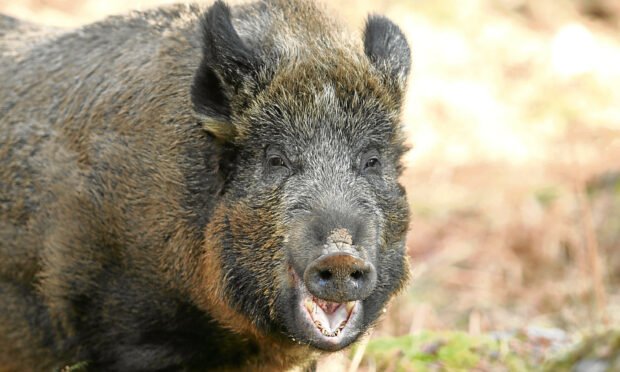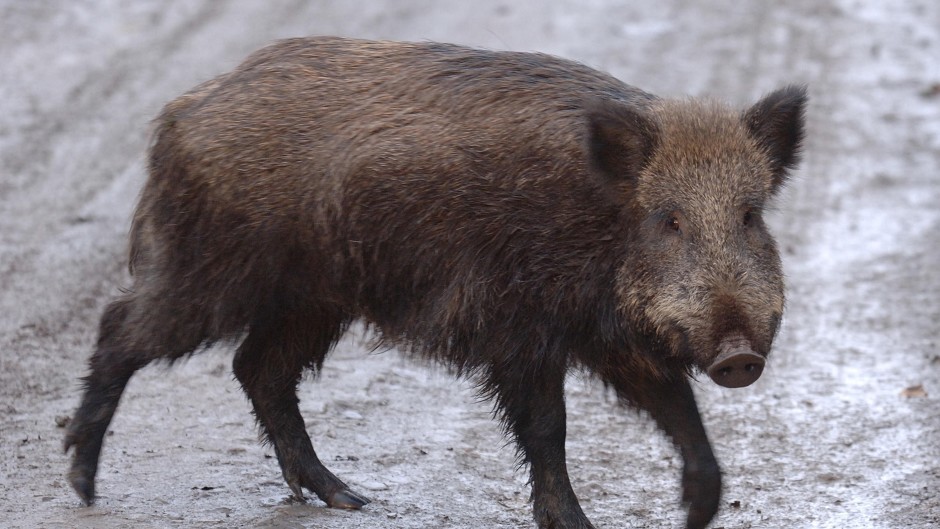Concerns have been raised about a marauding squad of wild boar on the shores of Loch Ness.
Complaints range from the boars digging up fields, attacking people walking dogs and attacking other wild animals, Highlanders want something done about them.
Others call the beasts feral pigs that have made a bid for freedom. Whatever they are called everyone agrees, stay clear.
Footage of wild boar has surfaced, but the films owner said he was reluctant to say where they were captured in a bid to get people to talk about the scale of the problem in the Highlands.
Free-ranging, breeding populations of pigs have established in the Highlands following recent escapes or deliberate releases from wild boar farms or collections.
Wild boar interbreed with domestic pigs and environment body NatureScot believe many illegally released pigs in Scotland are hybrids between wild boar and domestic pigs or breeds of hairy pig.
It refers to all free-ranging pigs living in the wild in Scotland as ‘feral pigs’.
The release of any pig into the wild in Scotland is illegal.
Wreaking havoc
In Invergarry the problem is said to be wreaking havoc.
One resident, who did not want to be named, said he believed there were dozens of the wild animals in the area.
He said: “They have been digging up entire fields, and they congregate around the entrance to the golf course.”
He said one of the beasts had charged at him and his dogs when he was out walking in the dark.
He said: “It is getting to the point you can not go out at night to walk your dogs for fear of attack.”
Wild boar are native to Scotland but were hunted to extinction by the 1300s. Since then, captive animals have been imported from continental Europe and kept under license in zoos, private collections and on farms.
Retired hill sheep farmer Innes Smith has compiled a video of the animals. He said: “I am often asked ‘are they true wild boar or just feral pigs?’
“Well, I assume the pure populations of wild boar on the continent get challenged by the odd farm escapee.
“But the pigs I have seen over the last few months look like and behave like wild boar…mostly, just the odd one might be questionable.
“In the area I have been lucky enough to work in my conclusion is that there are many more than you first think.
“The pigs in this clip are, I think, this year’s young just speaned (weaned) off the sow. Hopefully in a few months we will have some piglets to see.
“Again, so many thanks to those who have made these wee films possible.”
He told The Press and Journal: “It’s fascinating that wild boar have finally found a way back into the Scottish environment.
“Let’s hope this time we can learn to live with them and give them the respect they deserve.”
Others say the animals should be culled.
What is the legal status of feral pigs in Scotland?
There are many non-native species in Scotland, although only a few of these cause damage to the environment, the economy, our health or the way we live.
These are called invasive, non-native species.
In recent decades, breeding populations of feral pigs have become established in Scotland as a result of escapes or illegal releases.
These animals come from a mix of both wild boar and domestic pigs and, as such, they are not native to Scotland.
Releasing any new species, such as wild boar, requires a licence from NatureScot.
NatureScot has not issued any licence to allow the release of wild boar in Scotland.
Wild boar and their hybrids are considered dangerous wild animals and they can only be kept under licence under the Dangerous Wild Animals Act 1976.
Individual land managers and local communities are responsible for controlling feral pig populations.


Conversation